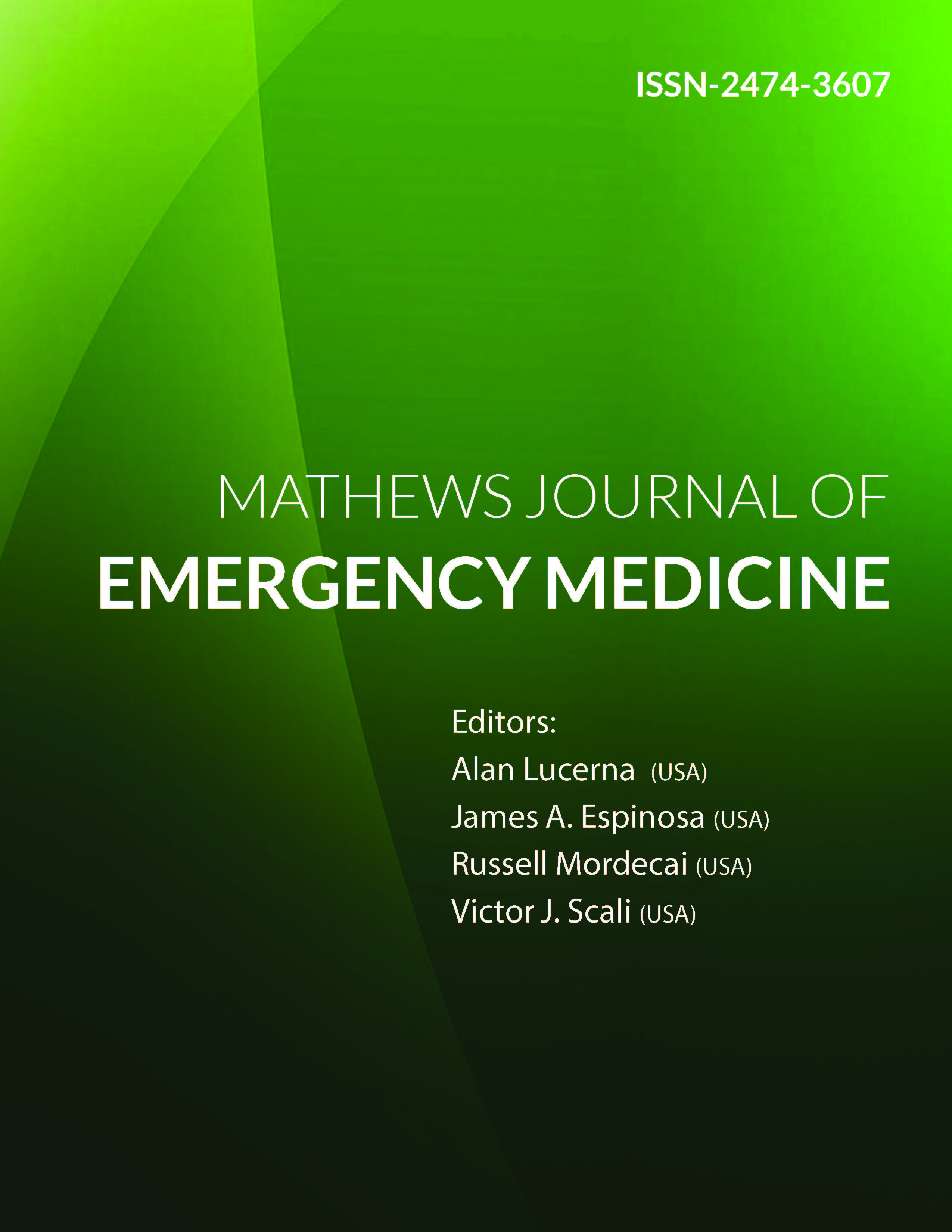
Information Links
Previous Issues Volume 1, Issue 3 - 2016
Can Emergency Department Physicians Safely Discharge Patients Presenting with TIA? Assessing the TIA Rapid Assessment (TIARA) Protocol
Karen Greenberg1 , Daniel Eichorn1,2, Alexandra M Lesenskyj1 , Christina R Maxwell1 , Michael D’Ambrosio1 , Chirag Shukla2 , G Peter Gliebus1 , Erol Veznedaroglu1 , Mandy J Binning1
1Drexel Neurosciences Institute, Drexel University College of Medicine, Philadelphia, PA 19107, USA.
2Capital Institute for Neurosciences, Capital Health System, Inc., Trenton, NJ 08638, USA.
Corresponding Author:Karen Greenberg, Drexel Neurosciences Institute, Drexel University College of Medicine, Philadelphia, PA 19107, USA. Tel: 215-762-6915; E-Mail: [email protected]
Received Date: 13 Jul 2016
Accepted Date: 27 Sep 2016
Published Date: 30 Sep 2016
Copyright © 2016 Greenberg K
Citation: Greenberg K, Eichorn D, Lesenskyj AM, Maxwell CR, et al. (2016). Can Emergency Department Physicians Safely Discharge Patients Presenting with TIA? Assessing the TIA Rapid Assessment (TIARA) Protocol. Mathews J Emergency Med. 1(3): 017.
ABSTRACT
Objectives: Among discharged patients with TIA, we hypothesize that rates of recurrent stroke within 90 days will be similar to that of an admitted population reported in the current literature.
Methods: Beginning in 2011 a comprehensive stroke center's neurological emergency department (Neuro ED) implemented a protocol named TIA rapid assessment (TIARA). All patients presenting with an acute neurologic syndrome are triaged based on this system. This protocol enables Neuro ED physicians to admit high-risk patients and discharge low-risk patients based on ABCD2 scores in conjunction with advanced neuroimaging. The discharged patients are provided with expedited work-up and neurology follow-up within 48 hours. Eligible participants were identified by physicians in the Neuro ED and consented at their 48-hour follow-up appointment. The TIARA protocol served as the intervention in our study. Rate of stroke recurrence at 90 days was the main outcome used to evaluate this new standard of care.
Results: At 90 days, 29 out of 37 patients discharge with TIA were successfully contacted by phone. One patient had a stroke in this time frame, yielding a recurrence rate of 3.4%. The overall risk of stroke reported in the literature currently is 11-17%.
Conclusions: While this study did not directly compare stroke recurrence rate to an admitted population, we were able to compare with rates in the literature. Our markedly low stroke recurrence rate at 90 days suggests that ED physicians can safely discharge patients with TIA provided they receive neurology follow-up in 48 hours.
KEYWORDS
Cerebrovascular Disease/Stroke; Transient Ischemic Attack; Magnetic Resonance Imaging; Emergency Care.